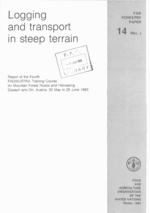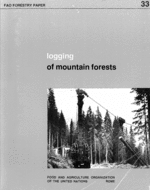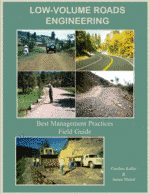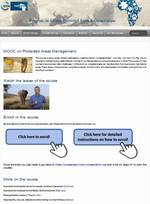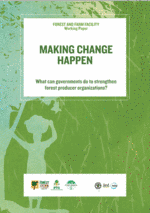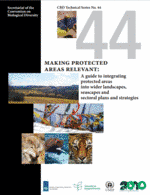Tools
A tool is a resource that supports and guides the implementation of SFM. This section includes all the tools available in the SFM Toolbox, which can be in form of publications, e-learning videos, software etc.
You can browse the Tools through keywords in the free search box or you can narrow the search using the filters on the right side of the page.
To meet global restoration needs and recover degraded forests and landscapes, adequate public and private investments are required to support restoration activities on the ground.
This publication examines the pathways available to financing restoration for a positive local level impact.
The document provides an in-depth study of how financial mechanisms can be...
The Fourth FAG/Austria Training Course on Mountain Forest Roads and Harvesting was held in the Forestry Training Centres of Ossiach and Ort, Austria, from 30 May to 26 June , 1983 . The course was made possible by a special contribution from Austria in support of FAO's Regular Programme activities...
The third FAO/Austria training Course on Mountain Forest Roads and Harvesting was held in the Forestry Training Centre of Ossia and Ort, Austria, from 1 to 28 June, 1981. The Course was made possible by a special contribution from Austria in support of FAO's Regular Programme Activities in the field...
The basic objective of this guide is to help engineers, planners, environmental specialists, and road managers make good decisions, protect the environment, and build good low-volume roads. Key issues that should be addressed when planning a road project include changes or negative impacts to the area that a road can...
This online course focuses on protected areas, how do they work and why they are important in maintaining the wealth of the environment, specifically focus in the African Region. This course will help you learn about conservation challenges in Africa and the role of protected area through exploring case...
The project on models for adaptive forest management (MOTIVE) investigates adaptive management strategies that address climate and land-use change. It also examines the impacts of these changes with respect to a broad range of forest goods and environmental services.
The project focuses on a wide range of European forest types under...
Forests are host to most of Earth’s terrestrial biodiversity. The conservation of the world’s biodiversity is thus utterly dependent on the way in which we interact with and use the world’s forests. The role of forests in maintaining biodiversity is also explicitly recognized by the United Nations Strategic Plan for...
This paper was born of a desire to better understand what governments can do to improve the enabling environment for FPOs. An initial paper was presented and discussed at a thematic session focusing on the enabling environment for FPOs during the International Conference on Forest Producer Organizations held in Guilin,...
The decision to develop a set of voluntary guidelines for forest concessions in the tropics, in the context of the 2030 Agenda, stems from the need to advance the implementation of sustainable forest management (SFM). In tropical countries, where deforestation rates are decreasing but remain alarming, and public production forests...
Protected area integration entails a two-fold process. The first involves linking protected areas within a broader network of protected and managed lands and waters in order to maintain ecological processes, functions and services. The second involves incorporating protected area design and management into a broader framework of national and regional...


